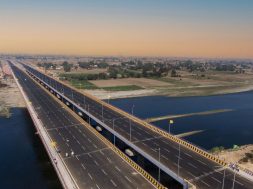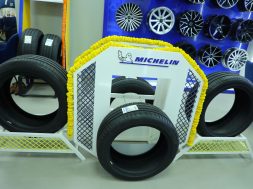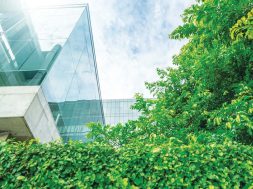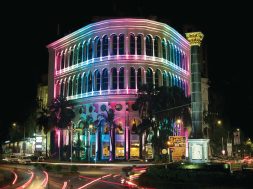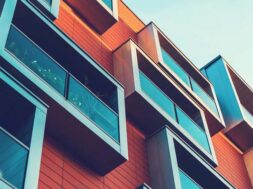Glass: emerging solutions for high-performance green buildings
M. Selvarasu writes about the importance of high-performing glass and the need of comprehensive energy simulation study to reap the maximum benefitsM. Selvarasu, LEED AP, Faculty & Director,Director, LEAD Consultancy & Engineering Services (India)
Energy is one of the scared resources in India, and gap between supply and demand is widening day by day due to rapid industrial growth. The building sector contributes 40 per cent of total energy consumed in the country and expected to grow in the future with the increase in demand for the buildings, both residential and commercial. HVAC and lighting are the major energy guzzlers in a building. Therefore, there is an immediate need to conserve energy in the existing buildings as well as new buildings by selecting high-performing technologies without compromising health and well-being of the occupants.Typically, energy consumption in a commercial building for a tropical region can be broken down into:• HVAC – 50 per cent• Lighting – 21 per cent• Equipment and others – 29 per centThe above statistics show that the lighting and HVAC are the major energy consuming equipment in a building. These two equipment offers tremendous scope for energy saving.
The load on the air conditioners can be optimised by reducing the building heat gain, besides equipment efficiency. The heat gain in a building can be minimised by adopting appropriate technologies for wall, glass, lighting, fresh air, plug loads, etc. The technologies and strategies to be deployed to minimise heat gain would vary depending on the climatic condition and location.
India being a tropical climate, heat load in the building should be reduced to lower the HVAC load. The heat ingress in the building is mainly from the building envelope as it is directly exposed to the solar radiations. Designing an effective building envelope to reduce the heat ingress is an important step in achieving energy efficiency in a building. The heat ingress in the form of conduction, convection and radiation occurs from exterior façade glazing, besides wall and roof. Therefore, having a plan to the use of highly efficient glass, balancing important criteria related to lighting and HVAC will result in drastic reduction in energy consumption.
Standards guidelines for glass in IndiaASHRAE 90.1 restricts the glass area to 40 per cent of the wall area as increased glazing increases the heat load. ECBC restricts the glass area to 60 per cent with stringent glass recommended for glazing area in the range of 40 per cent to 60 per cent. Positioning of glazingGlazing is a critical element in the façade design to get more day lighting to the building interiors and provide views for the occupants for better performance. The glazing should be more on the north and south side. But south side glazing should be protected with external shade to reduce the amount of direct sunlight entering the building.
The glazing on the east and west orientation should be minimised as maximum exposure to sun happens in these directions and also can be protected by keeping buffer zone in these two orientations.
LEED CS Gold rated Bagmane Tech Park in Bangalore used DGU with SHGC of 0.19
CriteriaWith the modern building architecture focusing on the glass, the right selection of it has become vital which is based on the following criterions:• Energy performance: Maximum heat gain in a building is through solar radiation, conduction and convection from the glazing. Air-conditioning systems are the major energy guzzlers accounting to 50-60 per cent of total energy demand of a building. A high-performance glazing can reduce solar and thermal heat penetrating into the building, controlling the increase of temperature. • Daylighting: Use of right glass helps in bringing an optimal natural light inside the building and reduces the use of artificial light. Visible light transmittance of the glass determines the amount of daylight entering the building.
Role of U-Factor, SHGC and VLT U-Factor: It measures the insulating performance of a façade. A low U-Factor indicates a better insulating window.
SHGC: Solar heat gain coefficient is a measure of its efficiency in blocking the heat from the sun. A lower number indicates less solar heat coming through, ranges from 0 – 1. In a warm climate, it is desirable to have a low SHGC glass. But for a cold climate, we need more heat to decrease the load on heaters. There, it is desirable to have a high SHGC glass.
VLT: Visible light transmittance is the amount of visible light that passes through a window. A higher number indicates that more light passes through the glazing, ranges from 0 – 1.VLT and SHGC should be well balanced to have comfortable working conditions, and good energy performing building.
Therefore, a glass with low U-Value and low SHGC gives good energy performance in a tropical climate, whereas a glass with low U-Value and high SHGC gives good energy performance in cold climate.
Intangible benefits of glassGlass provides a psychological connection to the outside world. Views through glass can reduce the visual fatigue. The sick building syndrome in the occupants can largely be reduced, thereby improving occupant health and productivity coupled with better indoor air quality.
Working long hours in electric lighting is believed to be deleterious to health; working in daylight will be more cheerful and create a healthy environment. Daylight provides high luminance and permits excellent colour discrimination and colour rendering. These two properties mean that daylight provides the necessary condition for good vision.
Aesthetically, the building looks more appealing and modern and speaks today’s architectural language. This will increase marketability of the property.
Tangible benefits of glassUse of efficient glass with good VLT will give ample yet comfortable lighting conditions. Thereby, decreasing the load on lighting power is required. Furthermore, use of daylight sensors can help keep the room lit to perfection without overdoing it. This is done by sensing the amount of light in a room and adjusting accordingly. Daylight sensors can reduce the artificial lighting needs and increase the life of fixture. They automatically infer the window orientation and the cloudiness levels of the current sky to predict the incoming daylight and set window transparency accordingly. Around 10 per cent energy savings is achieved by adopting these sensors than not using it, without sacrificing the user comfort.
A low U-Value and SHGC glass reduces the heat ingress, thereby contributing to a decrease in HVAC load and reducing the energy consumption.Glass contribution to LEED certification cannot be neglected. It can contribute around four points in energy optimization, daylight and views credits. Glass will also have impact on recycled content and regional material credits.
In regard to GRIHA rating, glass will have great impact on Criterion 13 — optimise building design to reduce conventional energy demand — and Criterion 14 — optimize energy performance of building within specified comfort limits.
ConclusionIf we select high-performing glass with optimal window to wall ratio, use of glazing on the façade will not affect the performance of the building. This required comprehensive energy simulation study with the involvement of all stakeholders of the building to reap the maximum benefits.
7
Cookie Consent
We use cookies to personalize your experience. By continuing to visit this website you agree to our Terms & Conditions, Privacy Policy and Cookie Policy.
